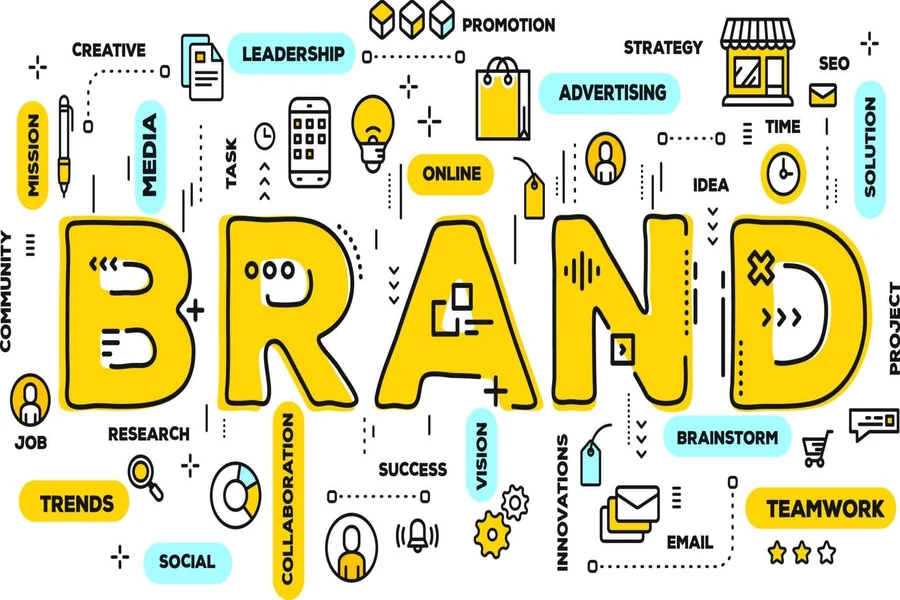What makes some brands endure for decades while others fade away? Why do certain companies manage to remain relevant, trusted, and beloved even as markets and consumer behaviors shift? How can your brand achieve lasting impact in a world saturated with options and constant change? Building a brand that lasts is not accidental—it requires strategy, consistency, and an emotional connection with your audience. The brands that rise above the noise do so by understanding their identity, staying true to their values, and evolving without losing their core essence.
1. Define a Clear and Purposeful Brand Identity
A strong brand begins with clarity. Successful brands are built on a clear understanding of who they are, what they stand for, and the unique value they provide. This identity goes beyond logos, slogans, or product offerings—it encompasses the brand’s mission, vision, values, and personality.
Consider Apple. Its brand identity is not merely about technology; it is about innovation, creativity, and simplicity. Every product, advertisement, and customer experience reinforces this identity. By defining a clear purpose and consistently communicating it, brands create a foundation that resonates deeply with consumers.
Action Steps:
- Articulate your brand’s mission and values.
- Identify the unique benefits your brand provides.
- Develop a brand voice and visual identity that reflects your purpose.
2. Consistency is Key
Consistency builds trust. A brand that behaves predictably and delivers on its promises earns credibility and loyalty. This applies to visual identity, messaging, tone, and customer experience. Inconsistent branding confuses consumers and weakens recognition over time.
Coca-Cola is a prime example. Despite minor updates to its visual design over the years, Coca-Cola’s core elements—the red color, iconic logo, and message of happiness—have remained consistent. This unwavering identity allows consumers to recognize and trust the brand instantly.
Action Steps:
- Create brand guidelines covering tone, visuals, and messaging.
- Train employees to deliver consistent customer experiences.
- Audit all touchpoints regularly to ensure alignment with brand identity.
3. Build Emotional Connections
Brands that last create emotional connections with their audience. Products can be copied, but emotions are harder to replicate. Emotional branding taps into values, aspirations, and experiences, fostering loyalty and advocacy.
Nike excels in this area. Its campaigns are not just about shoes—they celebrate determination, achievement, and human potential. Consumers don’t just buy Nike products; they buy into the story and lifestyle the brand represents.
Action Steps:
- Understand your audience’s values, desires, and pain points.
- Craft narratives that evoke emotion and resonate with those values.
- Encourage community engagement to deepen personal connections.
4. Adapt Without Losing Core Identity
Longevity requires evolution. Markets shift, consumer behaviors change, and technology advances. Brands that fail to adapt risk obsolescence. However, adaptation must be balanced with maintaining the core identity to prevent brand dilution.
Consider LEGO. Originally a simple toy brick company, LEGO evolved into a global entertainment brand with movies, video games, and theme parks. Yet, it never strayed from its core promise: inspiring creativity and imagination. Hiring a branding agency can be particularly helpful during periods of transformation, as they bring expertise in modern design, messaging, and positioning while maintaining your brand’s essence.
Action Steps:
- Monitor trends and consumer feedback continuously.
- Innovate in ways that align with your brand’s core identity.
- Test new initiatives carefully, ensuring they reinforce rather than contradict your brand.
5. Deliver Exceptional Experiences
A brand is not just a logo or tagline—it’s the sum of all customer interactions. Exceptional experiences create lasting impressions, turning customers into advocates. This includes product quality, customer service, and the overall journey.
Amazon demonstrates this principle effectively. From intuitive navigation to fast delivery and responsive support, Amazon’s brand is synonymous with convenience and reliability. Consumers remember and return for these consistent, positive experiences.
Action Steps:
- Map the entire customer journey to identify key touchpoints.
- Focus on exceeding expectations at every stage.
- Leverage feedback to continuously refine experiences.
6. Foster Brand Communities
Communities amplify brand impact. When consumers feel a sense of belonging and shared purpose, they become passionate advocates. Brand communities foster loyalty, engagement, and word-of-mouth growth, all critical for longevity.
Patagonia, the outdoor apparel brand, has cultivated a community of environmentally conscious consumers. Through activism, sustainability initiatives, and storytelling, Patagonia’s audience feels connected to both the brand and each other. This emotional investment strengthens loyalty and ensures long-term relevance.
Action Steps:
- Create platforms for consumers to engage and share experiences.
- Encourage user-generated content and stories.
- Support causes that resonate with your audience’s values.
7. Invest in Long-Term Brand Equity
Short-term campaigns can drive sales, but long-term brand building requires strategic investment. This includes marketing, research, product development, and reputation management. Brands that focus on long-term equity maintain relevance even during economic downturns or market shifts.
Disney exemplifies this approach. Decades of investment in storytelling, theme parks, merchandise, and media franchises have solidified Disney as a globally recognized and trusted brand. Its focus on long-term brand equity ensures sustained impact and profitability.
Action Steps:
- Allocate budgets for brand-building initiatives, not just immediate sales.
- Protect and manage brand reputation proactively.
- Measure brand equity through awareness, loyalty, and perception metrics.
8. Tell a Compelling Story
Humans are wired for stories. Brands that tell compelling narratives stick in the minds of consumers and create emotional resonance. Storytelling bridges the gap between functional benefits and human connection.
Take Starbucks, for example. Beyond coffee, Starbucks tells a story of a “third place” between home and work—a welcoming, personalized space. This narrative transforms a simple beverage transaction into a meaningful experience, reinforcing brand loyalty.
Action Steps:
- Identify the story your brand wants to tell.
- Use authentic voices and experiences to bring the story to life.
- Incorporate storytelling across marketing, social media, and customer interactions.
Conclusion
Building a brand that lasts is more than creating a logo or catchy tagline. It requires a deliberate strategy grounded in clarity, consistency, emotional connection, adaptability, and exceptional experiences. Brands that endure invest in relationships with their audience, tell meaningful stories, and maintain a commitment to their core identity while evolving with the times.
In an era where consumer attention is fleeting, brands that focus on long-term impact rather than short-term gains are the ones that thrive. By following these strategies, businesses can build brands that are not only recognized but remembered, trusted, and loved for generations.
Longevity in branding is not a matter of chance—it is the result of intentional, thoughtful, and consistent efforts. The brands that master this art don’t just survive—they leave a lasting mark on the world.







